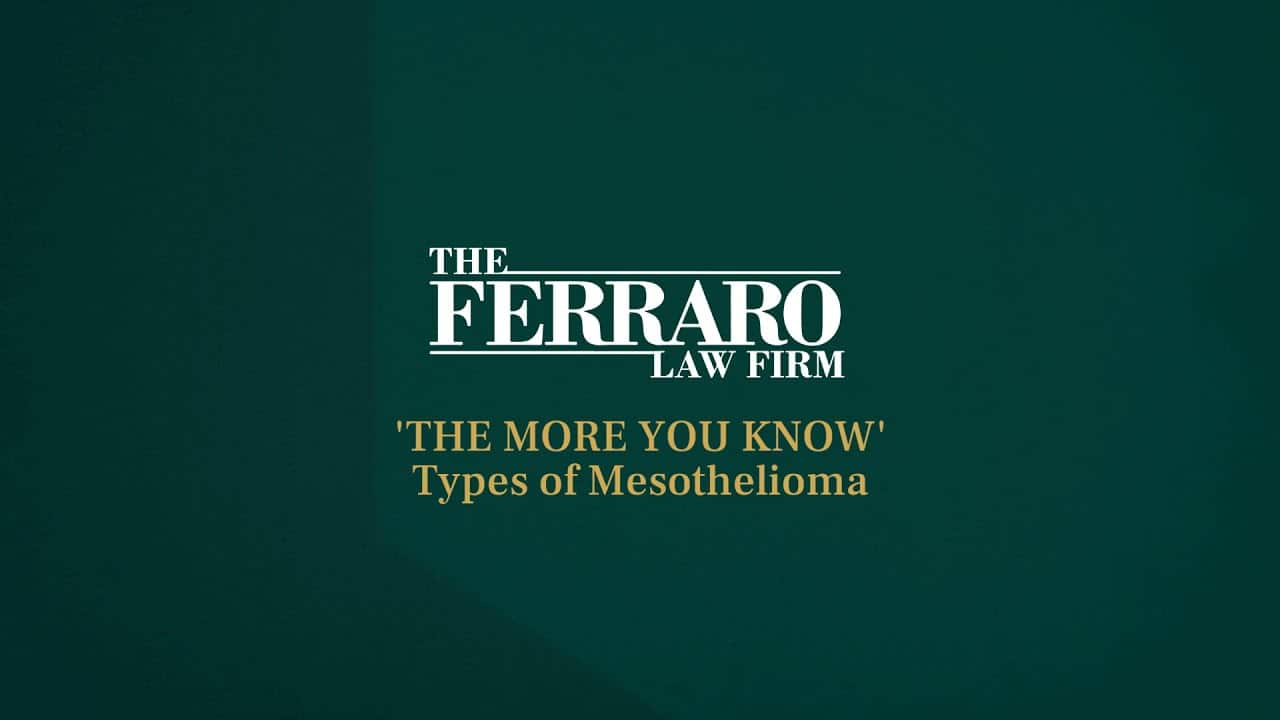If you were seriously injured, remember that it is crucial to choose the right law firm to represent your interests. We have been doing this for more than three decades, and have the resources you need to challenge any opponent.
Veterans & Mesothelioma
Veterans Diagnosed with Mesothelioma in Florida
Table of Contents
Call (888) 554-2030 If You are a Veteran Diagnosed with Mesothelioma
Veterans with mesothelioma comprise a significant portion of the victims of this terrible cancer, having been exposed to asbestos while serving in the military, either in shipyards, aboard ships, in military housing, or overseas.
In the unfortunate event that a veteran is diagnosed with mesothelioma or other asbestos-related diseases, contact a law firm experienced in handling mesothelioma and asbestos claims right away.
Time is of the essence and fighting for the financial well-being of your family and loved ones is critical. Call The Ferraro Law Firm at (888) 554-2030 to schedule a free case review!
Why are Veterans at High-Risk for Mesothelioma?
Mesothelioma is typically defined as cancer of the lining surrounding the lungs or abdominal cavity. In the United States, it has been linked almost exclusively to asbestos exposure. Because diagnosis typically occurs 30 to 40 years after exposure, many fail to connect the cancer with their military service.
Others at high risk include automotive mechanics, drywall workers, shipyard employees, those who worked in power plants and oil refineries, utility workers, miners, and railroad employees.
But veterans are among the most at risk — particularly those who served in the U.S. Navy. About one-third of those diagnosed with mesothelioma are veterans of the U.S. Armed Forces. The U.S. Department of Veterans Affairs reports there are 25 million living veterans, and hundreds of thousands, if not millions, were exposed to asbestos during their military service.
Asbestos was widely used because of its heat-resistant and fireproof properties — it was not phased out of use until the 1970s or in some cases the 1980s. Every Navy ship built before the mid-1970s had asbestos widely used during its construction. In particular, the material was used below deck and in engine rooms — sailors who routinely worked in these areas are thought to be at increased risk.
Which U.S. Military Branches Used Asbestos?
Asbestos was widely used by all branches of the U.S. military until the 1980s and its use put many veterans at risk for asbestos-related illnesses such as mesothelioma, a deadly form of cancer.
Asbestos Exposure in the U.S. Navy
The U.S. Navy used the most asbestos-based products of any military branch, exposing Navy veterans to a much higher risk than in the other branches. This was due to a government mandate since almost every ship built between the 1930s and late 1970s used asbestos-containing materials in an effort to protect them from fire and corrosion. However, due to the tight confines of these ships and the lack of proper ventilation, it was impossible for sailors on board to escape hazardous exposure levels. Perhaps one of the worst places for asbestos exposure were engine rooms and boiler rooms, which contained many materials that were so thick with insulation that it was difficult to avoid being exposed.
Asbestos Exposure in the U.S. Air Force
Asbestos exposure is a serious issue facing many United States Air Force veterans. During their service, U.S. Air Force veterans who regularly worked on planes were exposed to asbestos-containing products. These products were designed to help prevent airplanes and other aircraft from catching on fire, using high heat insulation and flame-resistant materials. Notable asbestos parts used by the U.S. Air Force included brake pads, cockpit and engine insulation, as well as fireproofing materials like blankets, clothing and cloth items.
Asbestos Exposure in the U.S. Army
The U.S. Army has long dealt with the dangerous presence of asbestos in its vehicles and on its bases. Asbestos, a naturally occurring mineral, was used in many vehicle parts such as gaskets, brake pads, and construction materials like insulation and paint due to its flexibility and insulation properties. This means that veterans who worked closely or regularly with these materials faced an increased risk of exposure throughout their military service. Some jobs were more likely to be associated with higher levels of asbestos exposure than others – construction workers, firefighters, and electricians are just a few examples of positions that may have been exposed to asbestos from time to time.
Asbestos Exposure in the U.S. Coast Guard
Asbestos was widely used in maritime applications throughout the 20th century, and ships of the U.S. Coast Guard were not immune to its use. All sorts of asbestos-containing products were used during construction and repair jobs, from insulation for pipes and walls to electrical wiring and components. Boiler technicians, electricians, insulators, welders, and other laborers performed their work without knowing how dangerous it was to be surrounded by asbestos dust particles that could enter their lungs when breathed in. Unfortunately, this led to an increase in those who developed asbestos-related diseases over time, including lung cancer and malignant mesothelioma.
Asbestos Exposure in the U.S. Marine Corps
Asbestos fibers can become airborne and inhaled when disturbed or broken down during construction projects or maintenance work. U.S. Marines may have encountered this when working on planes or ships for extended periods of time while serving their duty, or even from their barracks and housing units within military bases that contain asbestos-laden building materials like insulation and sound-proofing materials. The risk was further heightened at some military sites where asbestos sandbags were used for temporary protection against enemy bombardment; this led to many veterans being exposed to large amounts of timbers impregnated with asbestos dust particles during World War II. All these scenarios can place the members of the Marine Corps at a greater risk for developing significant respiratory ailments due to long-term exposure if not identified earlier
Secondhand Asbestos Exposure in Military Families
Military family members also have a higher risk of asbestos exposure. Whether from living on a military base or secondhand exposure, if you have a mesothelioma diagnosis or asbestos-related illness it’s important to talk to your doctor about the potential for secondhand exposure.
Secondhand asbestos exposure occurs when a family member brings home asbestos dust from their work environment. When a military member with asbestos particles attached to clothes and skin enters their home, the fibers can become airborne and breathed in, leading the others in the family to suffer secondhand exposure.
Due to this risk, many members of military families have been diagnosed with mesothelioma—a form of cancer caused by asbestos fibers entering the body and eventually becoming lodged in tissue. This illness is especially hard for military families because often times it was an innocent bystander (the family member) who became affected due to prolonged secondhand exposure. It’s important for these families to be aware of potential health risks so they can take preventative steps such as airing out clothing outdoors before bringing it into the house and washing down surfaces after long periods away from home.
Frequently Asked Questions: Mesothelioma & Asbestos
How can I file a mesothelioma lawsuit?
How long does it take to contract asbestosis?
Who Is Eligible for Asbestos Disease VA Benefits?
The Ferraro Law Firm provides comprehensive legal services, including mesothelioma representation for military veterans. Call (888) 554-2030 for a free and confidential consultation.






